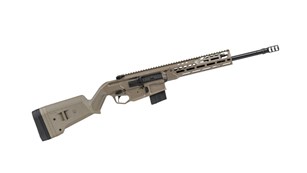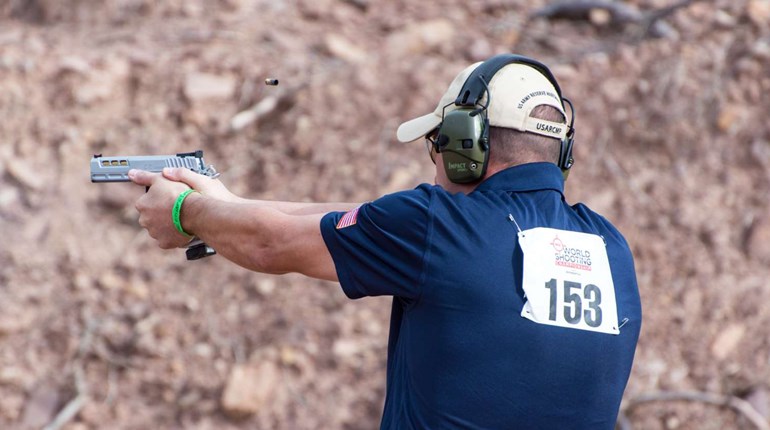
There is a difference between testing for accuracy (shooting groups) and sighting-in to get a correct zero. Let’s not mix them up. Accuracy testing obviously checks rifle and ammunition accuracy by shooting groups. This is easily resolved—simply have an aiming point on a target or a sheet of paper (such as butcher paper with a sticky note on it). Then, shoot your test groups and at this time do not sweat where they hit—if you want to check for accuracy through grouping. If you shoot up your aiming point, you have simply lost your target.
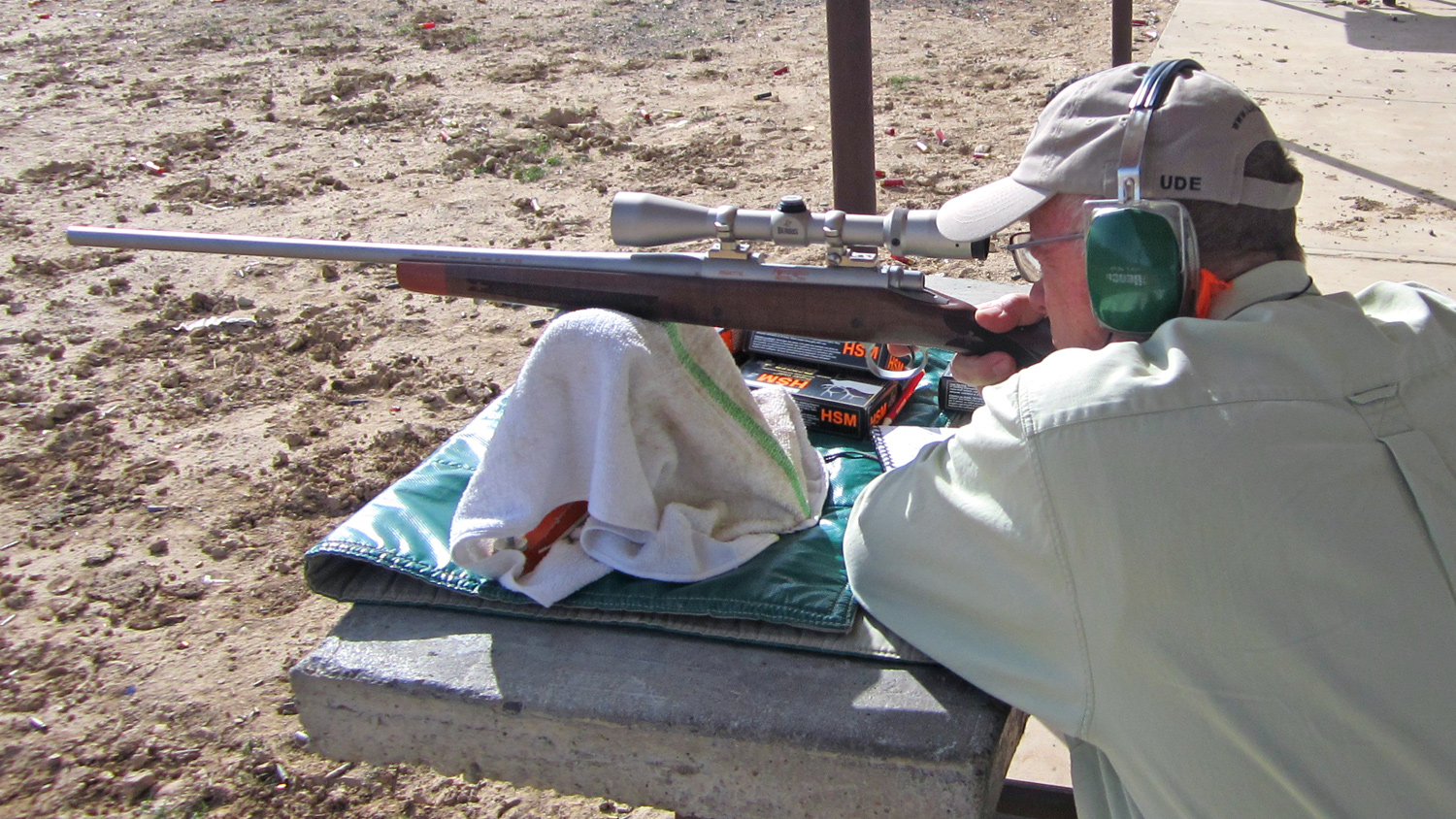
It’s simple, once a certain ammunition mix groups best for you, the zeroing process begins. Take the group you most prefer, and note the distance from your target’s aiming point. Make sight adjustments to move it where you wish your rounds to hit—and of course verify your adjustments with a few shots. That was easy—but wait, there’s more.
Let’s talk ammunition. It can make a big difference! If you are hunting and your game is within 200 yards it will not matter as much if your game is out 300- to 600-plus yards. A rifle that keeps shots in a 1-inch circle at 100 yards will generally not keep them in a 6-inch circle at 600 yards. Rifles are not lasers or photon torpedoes—the bullet strike to range minute of angle (MOA) is not proportional.
If you have a rifle that groups an inch at 100 yards and keeps them in 6 inches at 600 yards you have a great rifle and you are a very good shot too! Yes, I know, there are a bunch of half minute guns out there that will hold 3 inches at 600 yards if the ammunition is really accurate and a true expert shooter is involved—however, both shooters and guns that can do that are rare.
Keep your ammunition cool and out of direct sun at the range. Cartridges laid on the bench in direct sunlight will heat very quickly, which raises internal pressures when fired. These sun heated rounds will develop higher random pressures from round to round which alters internal ballistics and adversely affects shot-to-shot velocity—thus degrading accuracy. This can become critical or even dangerous if the ammunition is loaded at top velocity/pressure (hot) to begin with. Handloaders be aware.
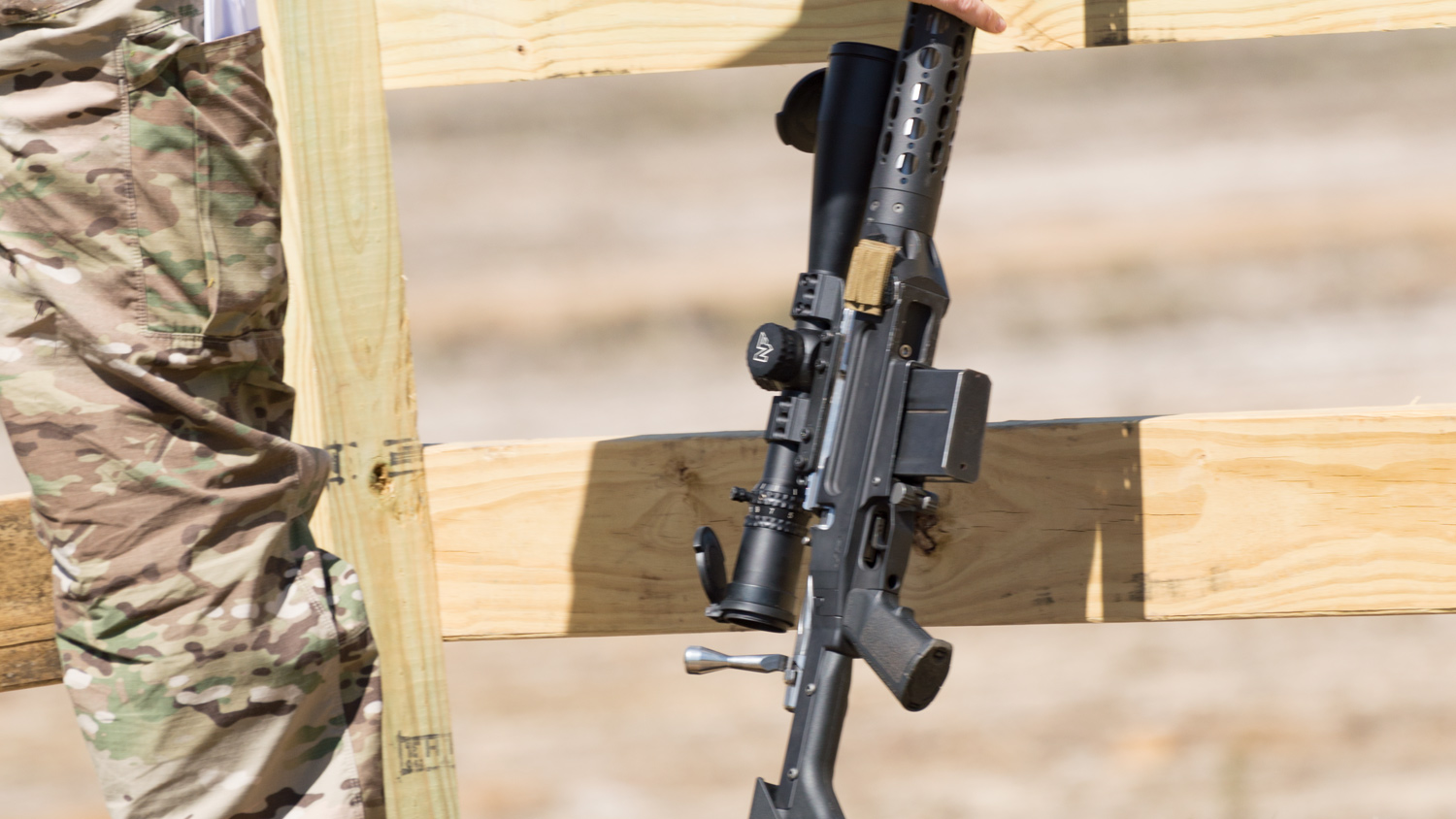
Direct sun on exposed ammunition will always cause groups to open up big time. This may not be such a big deal in 100- or 200-yard shots—but at longer ranges it can really affect accuracy. Years (okay, decades) ago when I was competing in National Match Course competition I tested this. I heated some .308 Win. cartridges for my M1A to 160° F in no time (10 minutes in a 90° F day) thanks to the summer sun directly on the cartridges. I kept a second batch in the shade. At 300 yards the 160° F cartridge case heated ammo opened to nearly 8 inches while the much cooler shade stuff stayed at 4½ inches. This type of internal ballistics adversely affects all calibers right down to the .22 rimfire.
Keeping your ammunition out of the sun and sighting-in on an 80° F day for the time you hunt at on a 25° F day will not affect accuracy or your bullet impact much—it will some though. At extended ranges both the internal ballistics (cartridge and powder temperature and barrel temperature) and external ballistics (air density, etc.) will alter your hits more so but not much until you get out to 500- to 600-plus yards and this depends on the caliber—generally, real fast flat shooting stuff is somewhat less affected. The again, if you are hunting, why are you shooting that far?
How do we get better results from our rifles? Your gun should be well-maintained. Before you go to the range make sure the bore is clean and truly dry (more in a minute). Make sure the moving parts are lubricated. Do what you can to make sure the bolt’s locking lug contact points (all rifles have these) are greased to prevent any accuracy harming galling—in winter conditions use oil. Lubing the locking lugs actually is very important—don’t do it and you can gall the contact surfaces and screw up the head spacing some. Say goodbye to accuracy …
At the range you may have to fire two or more fouling rounds to remove any cleaning solvent remaining in the bore at a microscopic level. Passing a couple of dry patches through after you solvent/oil clean your barrel will not get the job done. A bore that is not truly free of solvent or oil lubricates the fired bullet at a microscopic level under pressure and can cause fired bullets to impact at a different place until the bore is fouled though firing—a good time to use surplus or old ammunition. If you are going hunting I would not clean the bore after the sighting process—or those first couple of shots on your hunting trip may not go where the others did during your sighting-in.
When I was competing in high power rifle silhouette I would clean my incredibly accurate rifles after just 10 rounds. I would run a couple of dry patches followed by a patch wetted with automotive brake and electric motor cleaner (not engine cleaner) followed with a dry patch or two. The brake cleaner removed any cleaner and the rifle would shoot dead-on from the cleaned barrel exactly as sighted in.
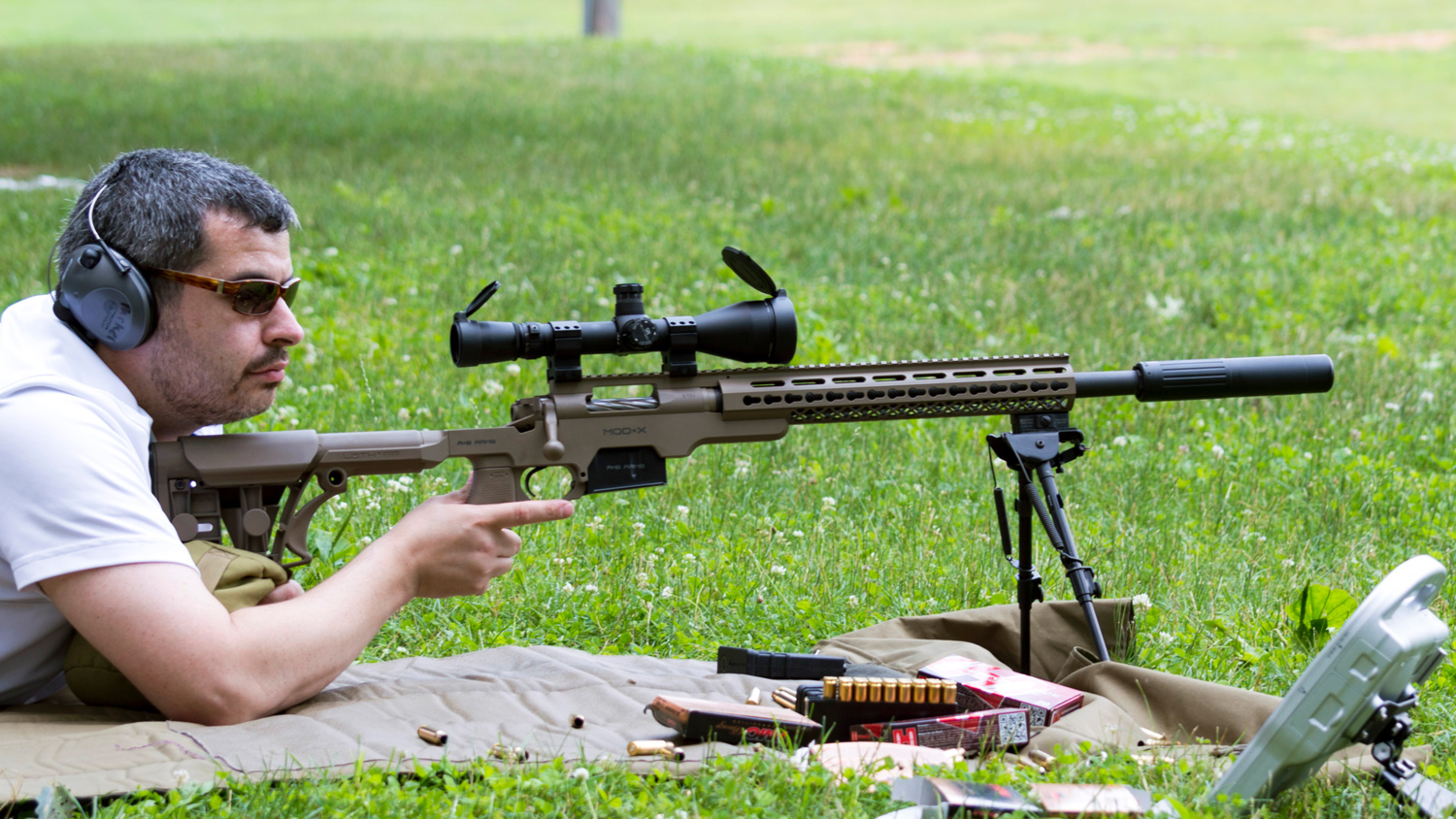
A few items for you to check before you go to the range:
- Clean and dry barrel.
- Rifle correctly lubed.
- Screws on the rings and bases are reasonably tight.
- Action screws are tight.
- An optional check depending on your level of fiddling with a rifle. Is the barrel free floating all the way back to the receiver (check by running a dollar bill folded over and sliding between the barrel and stock. Free floating rifle barrels will almost always outshoot bedded or contact stock to barrel rifles.
Once at the range
Benching your rifle correctly is critical. The trick in effective sighting-in/zeroing is shot-to-shot consistency. Your group accuracy is dependent on the gun and ammunition of course, but in most cases most important is you! Most rifles will easily outshoot their owners. Another matter is that of the wind and mirage which requires a fair amount of time spent on a known distance range with the shooter carefully observing shot-to-shot and taking notes on the effects of wind and mirage. By the way, if you think there is no image moving mirage over a snowy field on a sunny day—I got news for you. Generally, it’s about how well we hold and function the rifle from shot-to-shot.
Bench rest competitors are like Jedi Knights at mirage and wind readings—they have to be—because they are trying to shoot into the same bullet hole! They get the job done through shot-to-shot consistency and a ton of gun and ammunition technology, but they still have to pull the trigger. For the rest of us mere mortals, let’s continue with the basics.
The secret for Joe and Jane Doe is consistency—did I ever say that? Consistency is gained by proper and repeated support and operation of the rifle on the shooting bench, log, car hood or whatever you are resting the rifle on from shot-to-shot. The rifle and you, yes you, must be stable and not move around during the firing process or you will open up your groups. Firm up your rifle support and your “human” hold!
Now let’s talk about bench gear. Some use the top of their shooting box, sand bags, lead shot filled bags and rests of all types, a couple of coats piled on the bench, conventional shooting rests and even special heavy-duty shooting vise rigs that you fire from with the rifle seated in the rest to avoid felt recoil to your shoulder. All of these can deliver pretty good to great accuracy if you do your job and again that job is consistency and I have used all (except the latter) as support when shooting from a bench.
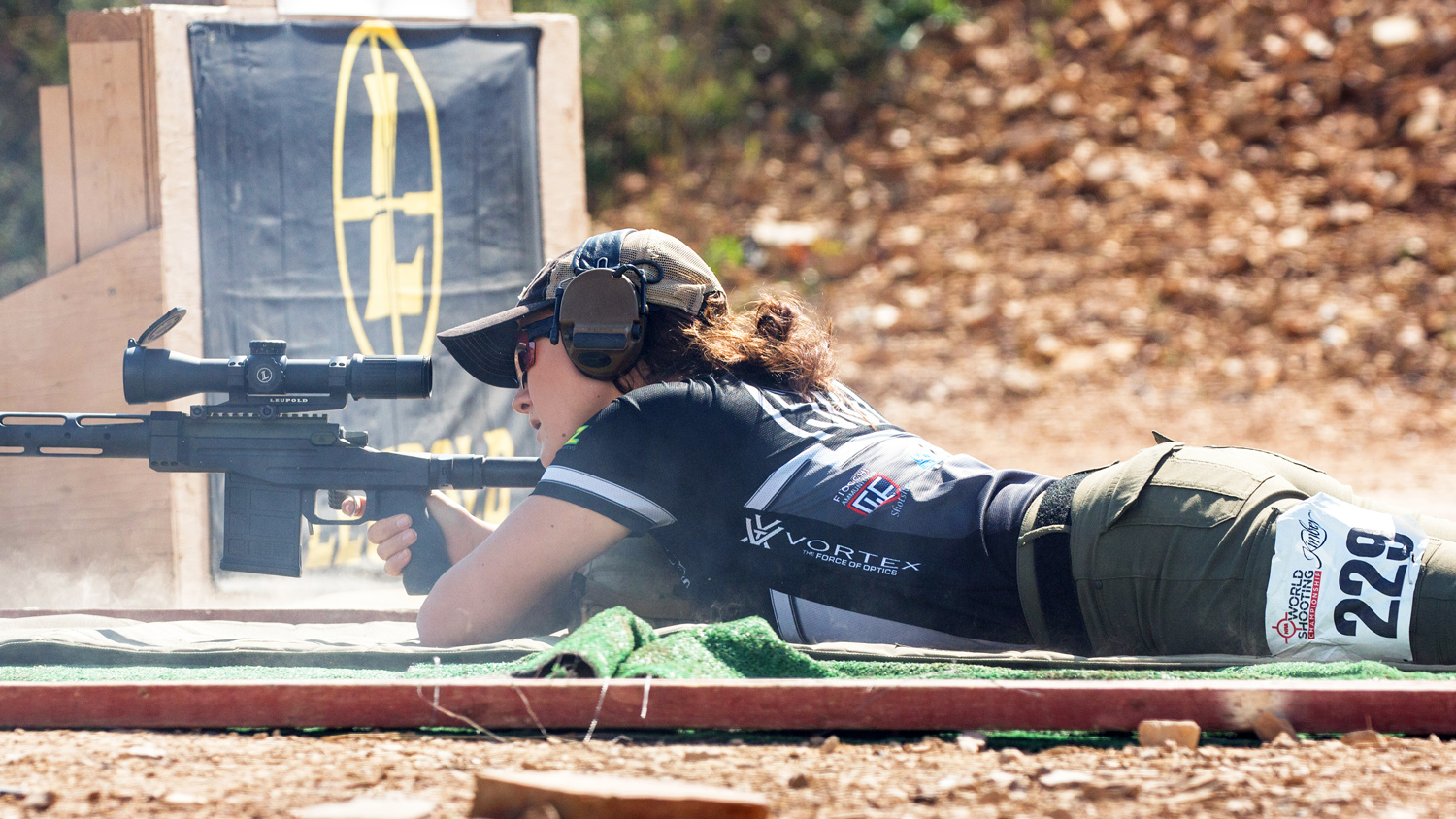
For our purposes we are talking about guns you hold in your hands—not guns locked into a special fixture—which might be good to check accuracy and groups but will not begin to resemble a shot you will shoot from your shoulder when not in the rest. For this article, we are talking about silhouette rifles, across the course guns, sniper rifles, hunting rifles and the various forms of smallbore rifles. Let’s assume for this part of the article that our hypothetical rifle is accurate and the ammunition is pretty good stuff.
The “trick” is how to take the recoil. Dan Dowling, gun builder extraordinaire and famous for his record accurate bench rest, competition and hunting rifles once told me that the key, all other things being equal, for off the best bench accuracy is to manage the recoil. That makes sense. The instant the firing pin hits the primer, nodes of oscillating vibrations begin to affect the barrel. When ignition occurs the bullet is going one way and the rifle is beginning to recoil the other direction and possibly upward (even the .22 rimfire) and the barrel is beginning to oscillate in some direction like a bull whip or tuning fork. If you’re allowing this before the bullet exits the barrel early recoil to “hit” your shoulder differently from shot-to-shot, then the overt observable barrel movement will come into play and the barrel’s nodes of vibration will also be different from shot-to-shot and accuracy will be adversely affected.
To me, a rifle barrel is just a tuning fork with a hole in it. Inconsistent operation causes the barrel to throw or flip the bullet differently at the target. Thanks to geometric angles, a super small movement at the muzzle can easily translate to inches down range. The group size generally is up to how much the shooter messes up, all other factors being the same. Be consistent in positioning the rifle on the rest, into your shoulder, pull pressure of the stock into the shoulder, careful trigger, and sight control still matter—bench resting or not.
Part of this is how your cheek rides on the stock. If you are wearing earmuffs and they are keeping you from consistently correctly contacting the stock with your cheek—that will affect shot-to-shot impact. The next thing human contact-wise is keep your face or cheek contact consistent, and do not allow the muffs to contact the stock during firing—for the best accuracy, it matters!
Next is trigger control. Best plan, squeeze, and don’t jerk! Let the shot surprise you. That out of the way, next, for each shot position use the first fingerprint “pad” of your finger to pull the trigger—not the joint. Now that you have the gun in your shoulder and all set up on the rest, etc., do not allow any part of your trigger finger to drag on the stock. Keep a little space between the stock and your entire trigger finger. Dragging your trigger finger on the stock affects trigger pull dramatically and in the field or during competition this can be critical.
Now comes frequency of fire. When I am sighting-in or checking accuracy of a load I fire three to five shot groups quickly. I load the rifle’s magazine just like in “real life.” Then I find an aiming point somewhere on the target. Then I fire my shots rather quickly—and I do my part of the job of benching and operating the trigger, etc. correctly. At this point, I don’t care where the shots hit on the target, or where the ejected brass goes (I can clean it later—messing around with it takes valuable time). I just want a group. When I am done with the shots, only then do I care to check group size, etc. My deliberately and carefully fired three or five shot strings are finished in under a minute.
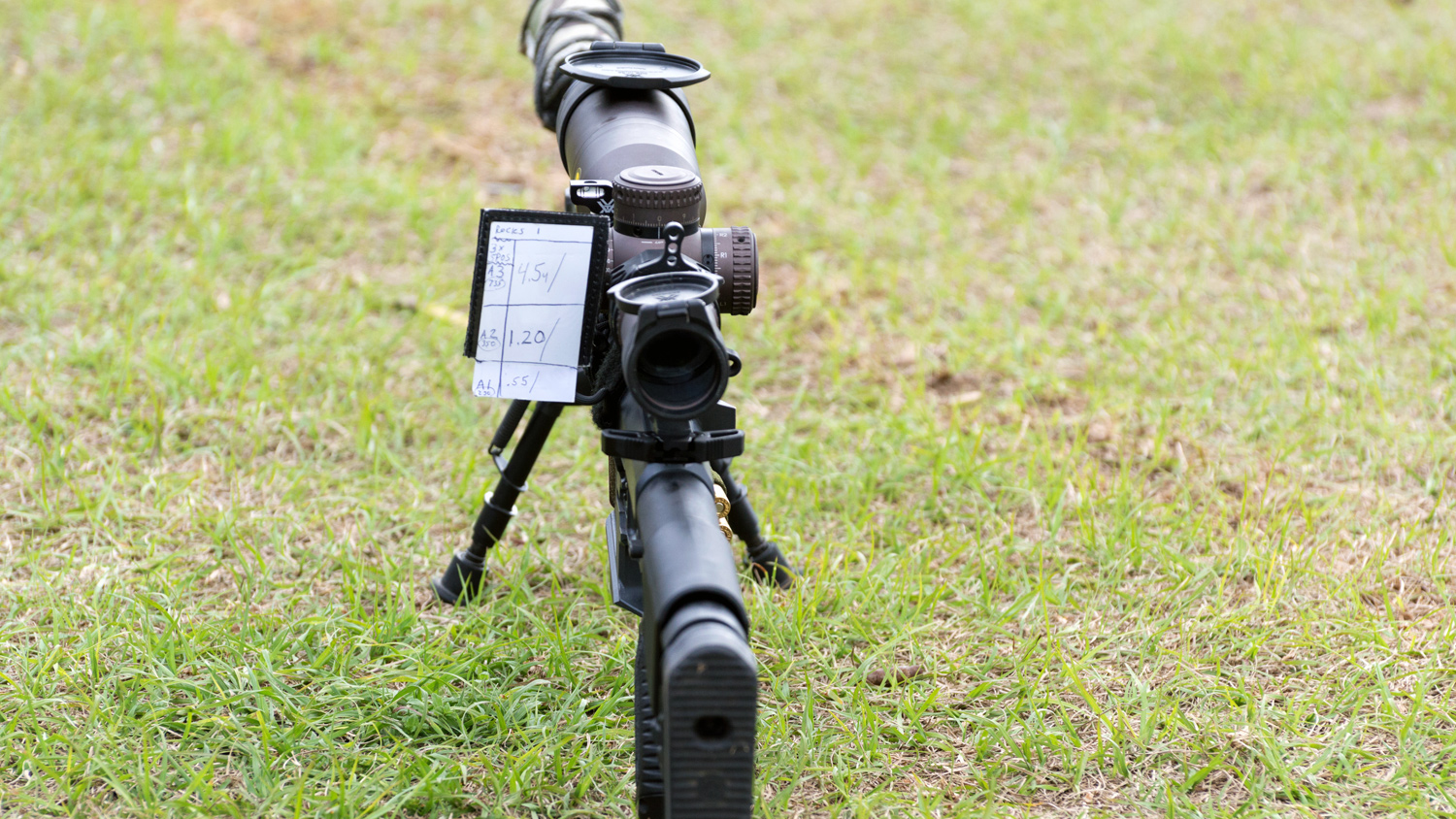
By getting the group fired quickly and carefully, the barrel does not have time to heat sink enough to affect subsequent shots so built up barrel heat does not alter things—because I don’t give it time to do so. Firing one or two shots and waiting allows the barrel to heat sink more thoroughly and maybe open the group up. Spread that heat affect over several minutes and each shot may act as if it were from a different gun.
More importantly, the wind and mirage effects on the shot in that quick three to five shot string are much less than if I spread that string over several minutes, thus giving the wind and mirage (and barrel temperature) time to change. This is especially important if the shooter is not experienced at wind and mirage reading. And, trust me, even in winter there is a mirage, you may not see it but it is there and that mirage moves the target image you see with your eyes to a different place.
The most efficient competitive shooters can judge where to hold to compensate for mirage, but that takes lots of shooting and note-taking to learn. Most of us at sight-in time are testing the gun and ammunition, and not our ability (or lack thereof) to adjust for conditions. Best solution, get the shots off quicker so there is less weather and heat effect on that particular group—remember, shoot correctly!
Arriving at a range with a brand new rifle (refer to my new barrel preparation article previously published on SSUSA.org) I prefer checking with a shot or two at 50 yards to see if it will even hit paper. If it does, I know where it hits and I can make a 100-yard adjustment to begin the actual accuracy checking. This short range shooting is a good time to get rid of old ammunition and foul the barrel though firing. Then I begin at 100 yards. If things look good I may go to 200 or much further out just for fun. Remember, the further out you test the better you need to be with wind and mirage readings—it really matters beyond 300 yards. And for what it is worth, the wind at your rifle’s muzzle has a much greater effect on the bullet than the wind effects at the target.
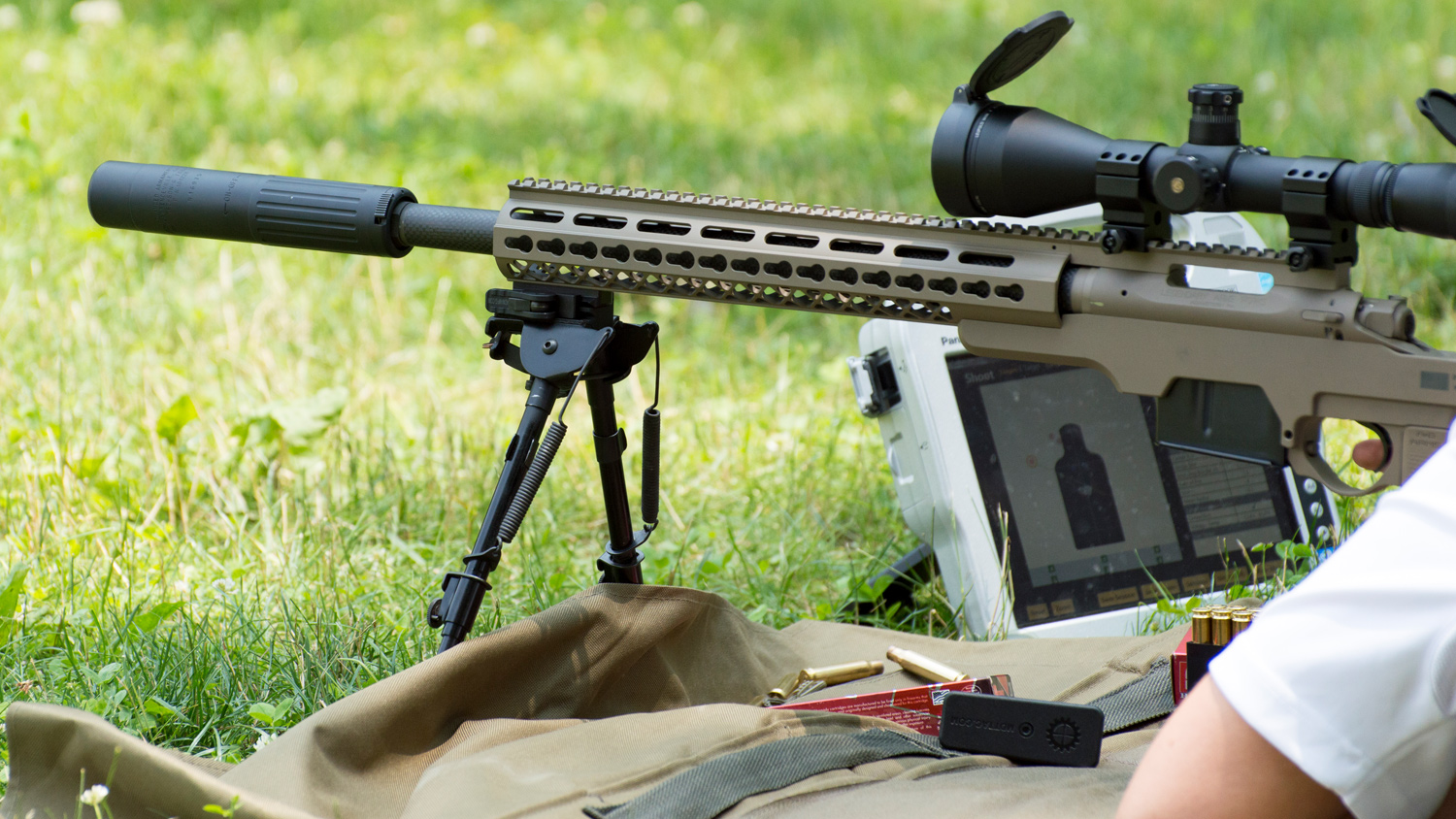
If I’m happy with a group, I move the group impact point using the sight adjustments to where I want the hits to go and bust a couple of confirmation shots—this isn’t rocket science. If I am not happy, then I open the bolt, and as with the ammunition I mentioned earlier, keeping both the gun and scope out of the sun I let it cool for 10 to 15 minutes. At exposed gun ranges this may mean doubling up a heavy towel and covering the gun (especially the scope) and ammunition to protect it from the direct sun. Once cooled, I am ready for the next group.
As mentioned before, sighting-in on a nice 80° F day, then hunting when it is 25° F or less will affect long range shots due to air density, but more to barrel temperature and pressure affecting the ammunition. On big game you will not notice it much out to 400 yards—if you do your part by having good zeroes at that range and accurately holding and firing. Competition and military sniper marksmanship is different, as they must know how Mr. Gun shoots in various climate conditions because the X- and 10-ring is small and located at various distances. In the case of military sniper applications, unlike targets or big game, the target and his friends may shoot back at you and with something much bigger, badder and maybe a whole lot of them too! For the rest of us, if we do our job of correctly applied marksmanship and common sense we will do fine.
You aren’t done yet
After benching a rifle most folks will pack up and head home. But things change when not shooting from the bench. During the hunt the shooter is actually holding the rifle, taking recoil differently, operating the trigger differently, head-to-stock position is different and pull pressure into the shoulder is different. All of these things will affect final bullet impact. And in the real world there is the dreaded “buck fever” that turns a competent shooter into a jelly-legged, adrenaline-packed target-missing machine with the propensity to jerk the trigger so hard it’s lucky not to break off!
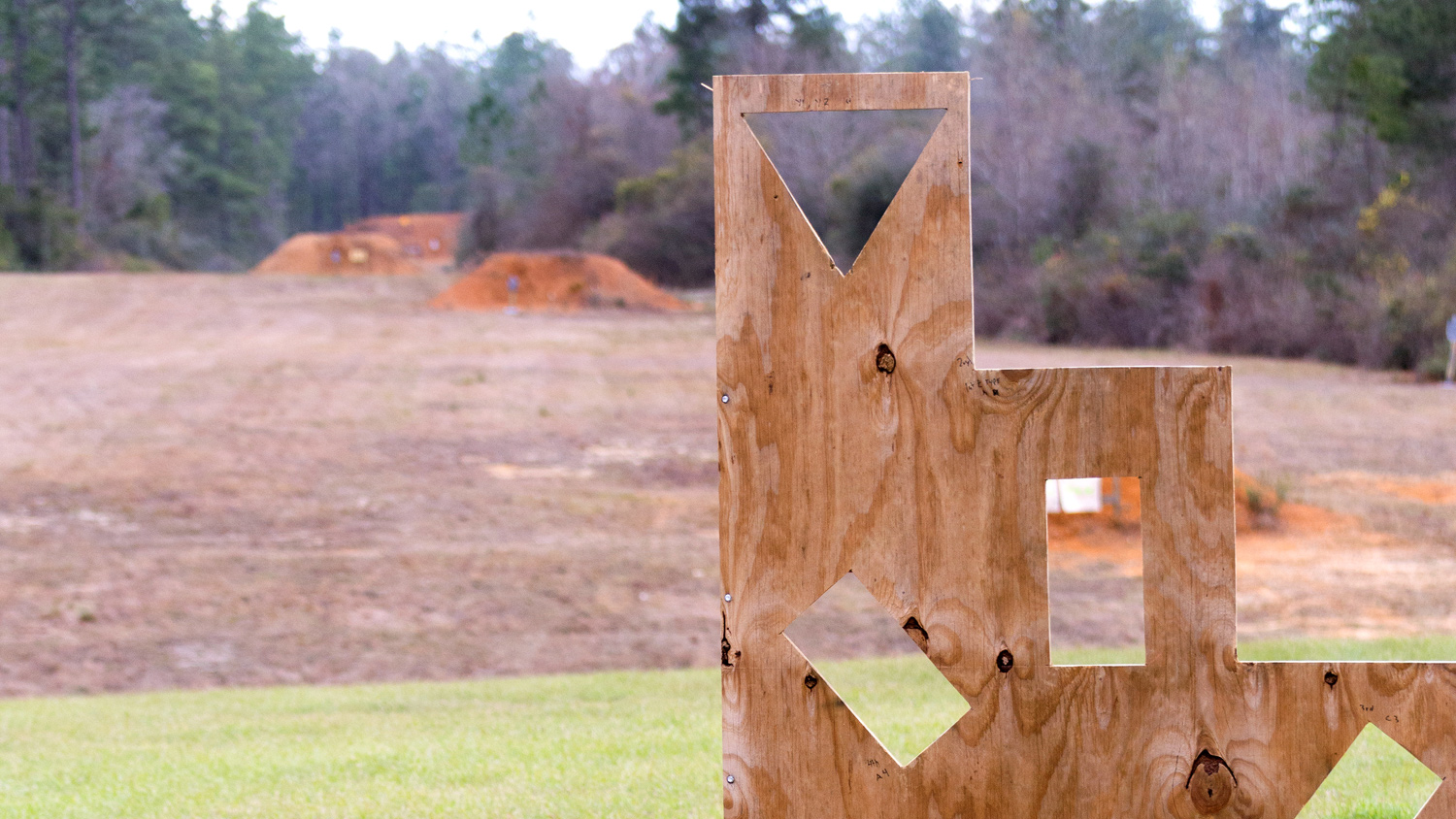
For competition and snipers the best shooters that are winners generally check their guns and ammunition for accuracy and a basic zero off the bench. Once that is completed they sight them in from their competition or fighting positions. I found that my offhand high power silhouette rifle bullet impact needed to be ¾ of a minute higher than off the bench due to how I took recoil and my follow through or lack thereof. At 500 meters (547 yards) that small change amounted to about 3½ inches at a relatively small target—it mattered.
What really is necessary accuracy? We read in the many gun magazines and online about high dollar, exotic ½ and sometimes ¼ MOA grouping rifles. However, without training and practice few can take advantage of that kind of accuracy—especially at longer ranges. It’s like the guy who can afford a Ferrari or some other super car. Will he ever drive the car to its capability? Not likely unless he likes near-death experiences. But, simply having that car or that gun is personal satisfaction. I got one and you don’t bragging rights apply here. I guarantee you a 2 MOA rifle for big game hunting under 300 yards is plenty for most of us—if we do our aiming and firing job correctly. And, when hunting in areas where 200 yards is a long shot a 3 MOA gun will do fine—assuming the shooter does his part in centering the shot into a vital area in the body of the animal—and for some of us the bigger bullet spread may help when we jerk the rifle into the target—it even happens in competitions—been there done that!
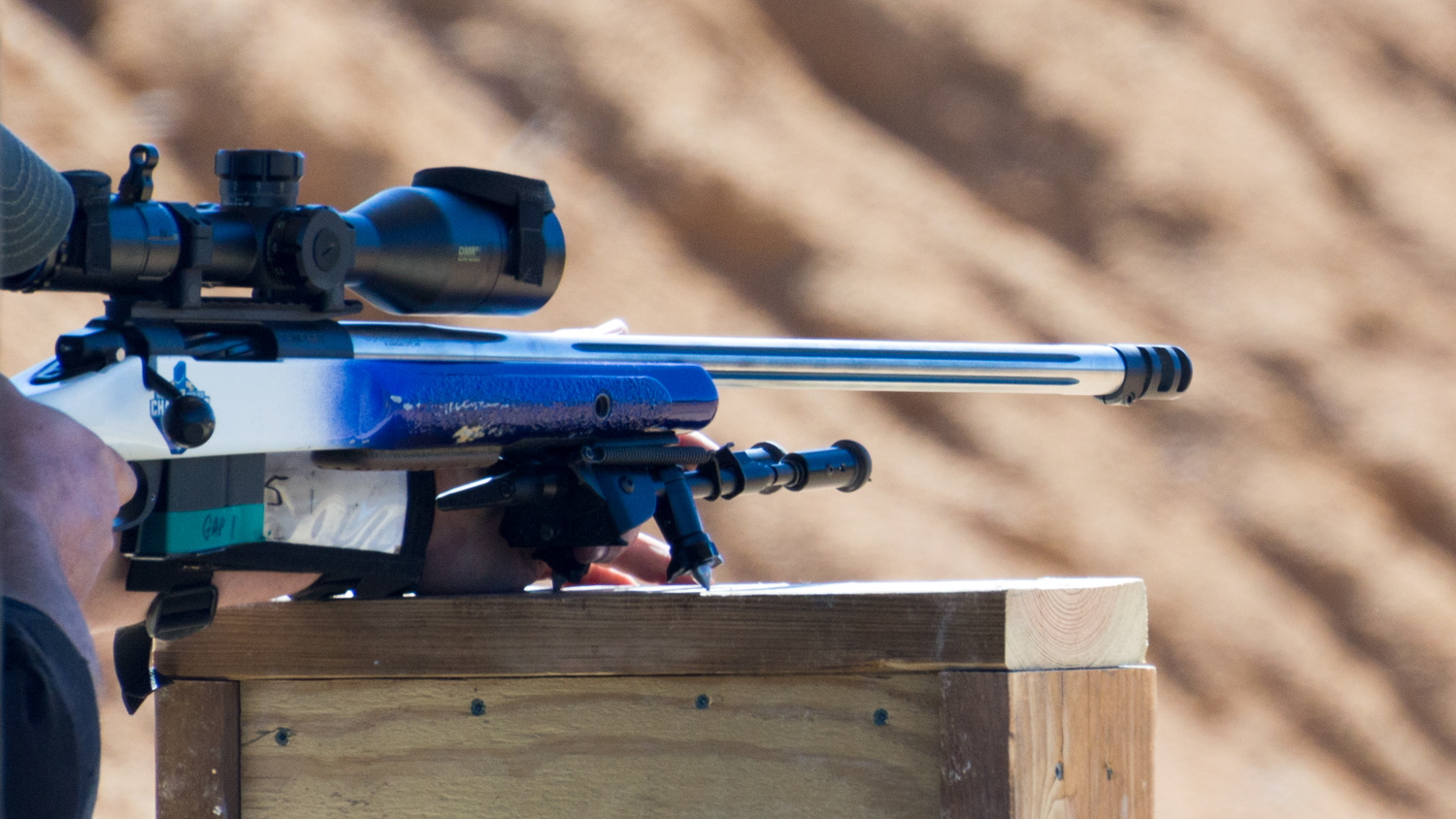
Here is where the fun comes in. When I helped with gun club-required membership weekend hunting sight-ins, I would see folks shooting 100-yard one-inch groups—sometimes the rare tighter groups. If they looked like good sports, I would ask them to play a game with me. After their sighting-in I would have them stand ready with a round chambered and safety on and when I said “start” they had 10 seconds (actually lots of time) to shoulder up and fire one shot offhand at their 100-yard target. I have done this about a hundred times. Only six times has anyone hit an 18x18-inch target with the first shot!
All are shocked! Actually, about 40 percent miss the entire four foot square backing board. Then the learning curve comes into play, assuming a deer or elk gives you a second chance at 100 yards—oh sure. I ask them to try again. About 20 percent are on paper. By the third shot they settle in and 95 percent get on the sheet of paper. After this little drill, most get quite a kick out of seeing the effects/results from the bench to the real world of their shooting. A high percentage then stuck around to finish the remainder of their box of hunting ammunition firing from kneeling and standing positions.
I had a buddy that would hunt in Africa every year. He used a standard weight .416 Rigby chambered rifle—I tried it offhand and damn, that thing kicked hard! He would go out prior to his African trip and over several days would blast 40 to 60 rounds of painful ammunition through the rifle offhand. He was getting used to the recoil and placing his shots from his hunting position as well as making sure he could also work the bolt quickly. As he told me, “You cannot screw up when your unhappy 50-yard wounded target can get to you in under three seconds and kill you.” He was always successful—never got killed.
One year I went to Sweden to hunt moose, they call them elk. Swedish federal law at that time dictated officially certified qualification with a certain low number of rounds (I forget the exact amount—a total of 10 rounds sounds about right). You had to be certified with multiple killing area hits at 80 meters both at a still target and then moving moose targets before you can legally hunt and the shooting must be offhand! I did fine and shooting at a running moose target is pretty cool—never done that before. But to the credit of the Swedes, good shooting matters and they even awarded shooting medals at the testing (even I got one).
Bench accuracy will not necessarily transfer to shooter accuracy when in a match or hunting and that one-inch bench group rifle may open up shots to the size of Minnesota when the world’s biggest elk comes into your view.





